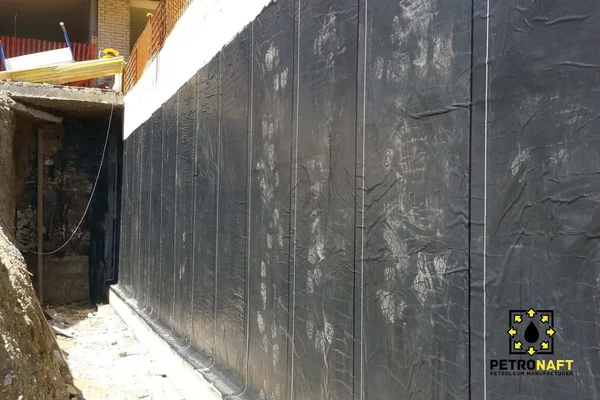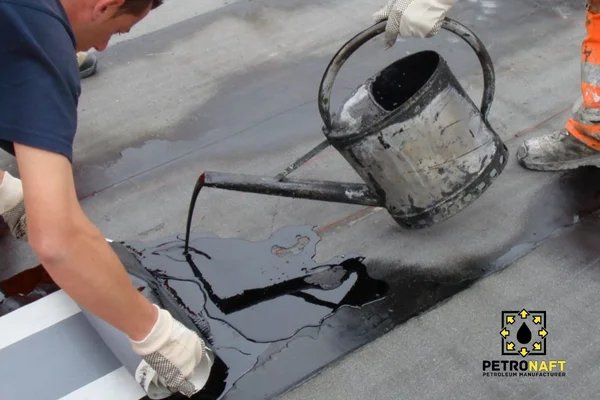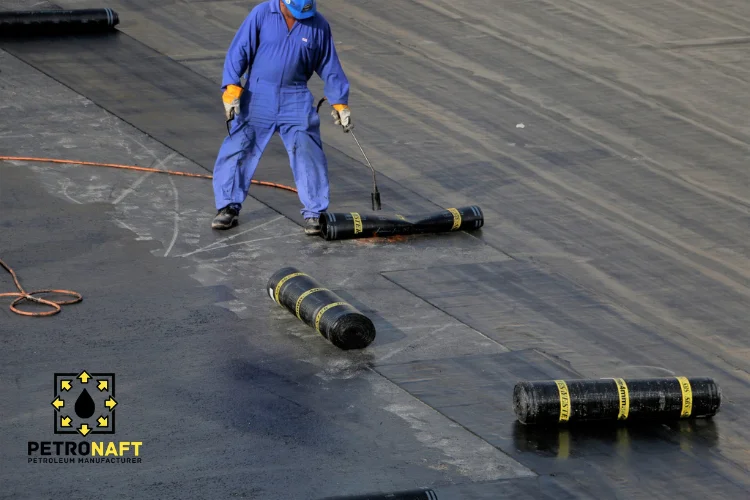Content Overview
Bituminous Membranes: The Ideal Waterproofing Solution
Bituminous membranes are an essential component of waterproofing solutions for roofs, foundations, and other structures. These membranes consist of layers of bitumen, a petroleum-based material, and a reinforcement layer made of fiberglass, polyester, or other materials. Bituminous membranes provide excellent protection against water and moisture intrusion, making them a popular choice in the construction industry.
In this article, we will delve into the different types of bituminous membranes, their applications, installation procedures, and maintenance practices. We will also explore the benefits of using bituminous membranes over other waterproofing solutions and their environmental impact.
Bituminous membranes waterproof roofs, basements, below-ground constructions, bridges, and more.
Common Venues for Submitting an application
– For Bitumen Roofs
- Green Roofs
- Roofs with Pitches
- Terraces
- Parking Levels
- Roofs with Flat Surfaces
- Roof Repairs
– The Use of Bitumen for the Purpose of Waterproofing
- Podiums, bridge decks, and tank linings are included in this category.
Technologies that focus primarily on bitumen and the many forms it might take
- Bituminous Membranes That Are Laid Down with the Assistance of a Torch
- Bituminous membranes that have their own inherent adhesiveness
- Additional Bitumen-Related Technologies and Their Related Applications

1- Bituminous Membranes That Are Laid Down with the Assistance of a Torch
After being laid down, bituminous membranes give off the appearance of a minuscule layer of watertight material that is completely affixed to the surface they are protecting. It is a flexible system that is capable of retaining its capacity to be waterproof while preventing cracks from appearing in the process.
– Main Uses
- Rooftops that are level and covered with ballast for further protection
- Balconies and terraces under tiles
- Soggy locations
- Basements, retaining walls, and other below-ground structures and walls
- Underground garages
- Bridges
- Slabs for the raft and foundations
- Protects a wide range of substrates in a diverse array of applications
– Advantages
- Method that has all of its ties entirely secured
- Resistance to the most severe climatic conditions
- Ease of maintenance and repair
- Excellent mechanical characteristics
- A very high degree of resistance to mechanical damage and punctures
2- Bituminous membranes that have their own inherent adhesiveness
During the application procedure, the release liner that is on top of bituminous membranes that attach to themselves is peeled off. This allows the membranes to adhere to themselves.
– Main Uses
- surfaces made of wood
- potential sources of ignition
- areas with little space, terrain that is steep, or points of interest that are difficult to access
- Below-ground constructions such as basements, retaining walls, and other buildings and structures
– Advantages
- It is not necessary to have a torch.
- An installation process that is not only more secure but also more expedient.
- Excellent adhesion even when the temperature is low; this product does not need any additional equipment.
3- Additional Bitumen-Related Technologies and Their Related Applications
– Bitumen Liquid-Applied Membrane
When it comes to generating smooth, entirely adherent, and risk-free systems, bitumen liquid-applied membranes are the best option. Due to the fact that they do not catch fire, these polymer modified bitumen emulsions may be applied without the need of a torch or flame. It is possible to utilize either coatings based on water or coatings based on solvents with them.
– Bituminous Tapes That Have the Capability to Adhere to Themselves
Sealing tapes made of polymer-modified bituminous material, with a self-adhesive adhesive; the top side of the tape is laminated with aluminum foil; the tape does not contain reinforcement.
– Hot Melt Bitumen
A polymer-modified type of bitumen (For production, bitumen 60/70 is used.) That is either elastomeric or plastomeric and is packed in a solid block is what’s referred to as “bitumen hot melt,” and this state goes by the name “bitumen hot melt.” In order to apply the block, it must first be heated, and then it must be put onto the substrate. This causes the production of a layer of waterproofing that is permanently bonded. In order to apply the block, the first step is to heat the block.

New Innovations in Bituminous Membranes for Advanced Waterproofing (Insights Added August 2024) New
In recent years, significant advancements in bituminous membrane technology have further solidified their position as a leading choice for waterproofing applications. These developments include enhanced durability, environmental sustainability, self-healing capabilities, and integration with smart technologies, which collectively offer superior performance and efficiency.
Enhanced Durability and Longevity
New formulations of bituminous membranes now include polymer additives that significantly improve resistance to mechanical damage, extreme weather conditions, and UV radiation. These innovations ensure a longer service life, even in the most demanding environments, making them a more reliable choice for both residential and commercial waterproofing projects.
Eco-Friendly Waterproofing Solutions
In response to the growing demand for environmentally sustainable construction materials, newer bituminous membranes are now designed to reduce environmental impact. These membranes feature advanced bitumen emulsions that minimize the release of volatile organic compounds (VOCs) during application, aligning with global sustainability goals and reducing the carbon footprint of construction projects.
Self-Healing Membranes for Reduced Maintenance
One of the most exciting advancements in bituminous membrane technology is the development of self-healing membranes. These membranes are embedded with microcapsules containing bitumen that automatically seal cracks and small damages when they occur. This self-healing capability drastically reduces maintenance needs and prolongs the lifespan of the waterproofing system, making it a cost-effective solution over time.
Advanced Application Techniques
The introduction of cutting-edge torching systems and self-adhesive technologies has streamlined the installation process of bituminous membranes. These advancements ensure stronger adhesion, even on challenging substrates, and improve safety by reducing the need for open flames during installation. This not only speeds up the application process but also enhances the overall safety of the construction site.
Smart Technology Integration
The future of bituminous membranes lies in smart technology integration. Emerging trends include the incorporation of sensors within the membrane layers that can monitor the integrity of the waterproofing system in real-time. These sensors can detect leaks or damages early, allowing for prompt maintenance and preventing costly repairs. Although still in the early stages of development, this technology represents a significant leap forward in the maintenance and monitoring of waterproofing systems.
These advancements in bituminous membrane technology not only improve the performance and sustainability of waterproofing solutions but also make them more adaptable to the evolving needs of modern construction projects. By staying informed about these innovations, professionals can ensure they are using the most advanced and effective materials available for their waterproofing needs.
Prepared by the PetroNaft Co. research team.

